Racism

I walked across the school yard and through the ominous painted doors of St. Athanasius Elementary School for the first time. My mother and I had walked hand in hand the long city block from home to the school, across the school yard, through the entrance, down the hallway, heels now echoing against linoleum and lockers as the smell of chalk and mimeographed copies wafted from each classroom we passed.
We entered my second-grade classroom where I was greeted by the teacher who told me to take my seat four heads from the front. That seat was my second home for half of every day for a year.
I had high hopes for second grade. At the very least, I hoped it would be safe. It wasn’t.
The girl who sat behind me demanded 25 cents per day to be my friend — or else. But worse, the white woman charged with teaching our classroom full of African-American children ruled us as if we were in her military camp … or worse… prison.
My teacher once punched me in the back because I forgot to hand in an assignment — in second grade.
Now take that single act of aggression and magnify it: a punch in the back becomes a suspension, an expulsion, or an arrest. Then systematize it. Call it a “Zero Tolerance” policy and spread it across 90 percent of schools in the United States. Then apply the policy inequitably, such that African-American children are punished at higher rates and more severely than white children. That is what happened when the culture of severe punishment promoted by the Tough on Crime movement permeated education systems throughout the 1990s.
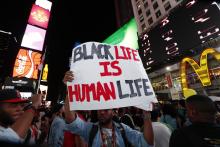
One month ago, the city of Ferguson, Mo., was violently shaken by the shooting death of an unarmed black man whose name is Michael Brown, Jr.
This is not the first time we’ve stood in this place. Michael Brown has been added to the roll call of unarmed black people killed by those hired to protect and to serve. His name joins the names of:
John Crawford , an unarmed Ohio man gunned down inside of a Walmart while examining a toy gun sold in the store.
Eric Garner , an unarmed New York man killed, after stating several times that he was having difficulty breathing, by an officer using an illegal choke hold.
Sean Bell , an unarmed New York man shot multiple times outside of the venue for his bachelor party the night before his wedding.
Oscar Grant , an unarmed Oakland man who was handcuffed, face down, before he was fatally shot.
And so many more black lives, both male and female, ended by the reflexes of a legal system designed to police some and protect others.
So why did the killing of Michael Brown, Jr. ignite such a firestorm of rage in a region and a nation where slain black bodies are commonplace?
This is not one of those neighborhoods that cause political analysts to pontificate over “how something so tragic could happen here.”
These are not deaths that leave communities and congregations struggling to find deeper meaning and psychological factors that might have contributed to the tragic loss of life.
As a matter of fact, since the death of Michael Brown, there have been two killings of black men with documented mental challenges, Ezell Ford of Los Angeles and Kajieme Powell, killed only a few miles from the site of Michael Brown’s death. Yet there have been no roundtable discussions of the role of mental illness in our society sparked by these deaths.
What made Michael Brown’s death different?

When churches conclude their summer hiatus and resume full-scale ministries this week, much will have changed from a year ago — outside their doors.
Conditions might have changed inside, too. But it is the world outside that demands fresh attention in mission and ministry.
Ferguson, Mo., has happened, revealing disturbing trends in law enforcement and deep fault lines between white experience and black experience.
Russia’s aggression against Ukraine happened, threatening a resumption of dangerous tensions between Moscow and Western democracies.
The Islamic State of Iraq and Syria happened, raising the dreaded specter of a take-no-prisoners war on modernity, reason, progress, women and other faiths.
The 113th Congress happened, mired in systemic dysfunction, with one party determined to cripple a black president and to channel more wealth to the wealthy.
The Koch brothers and their megabuck cronies happened, changing the face of electoral politics with unprecedented infusions of cash and ideological vitriol.
The two-tier economy happened, with one tier doing extraordinarily well and a much, much larger tier falling further behind, leaving despair among all age groups.
Border wars between terrified migrants and swaggering white men bearing arms against children happened, threatening America’s true core value as a welcoming nation promising freedom.
These outside-the-walls developments have little to do with the usual church fussing — except to say that it’s time for church people to stop their usual fussing.
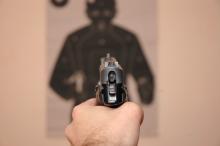
In Ferguson, an unarmed black teenager was killed by police. In reaction, thousands took to the streets in protest. However, rather than attempting to listen, the heavily militarized police immediately made a show of force with armored vehicles, assault rifles, riot gear, and tear gas. People tweeted photos and videos more reminiscent of scenes from Baghdad or Fallujah than of a little Midwestern suburb in America.
Tear gas and rubber bullets were fired into the crowd of peaceful protestors. Multiple reporters were assaulted and arrested. One cop was caught on video screaming “Bring it, all you f---ing animals! Bring it!” Another appeared to be indiscriminately pointing his rifle in people’s faces and yelling “I will f---ing kill you!”
This raises the question: Is what we saw night after night in Ferguson simply a matter of a few “bad apple” cops, a local isolated problem? Or is it indicative of a wider attitude of the police in relation to the use of violence and force? Is it an anomaly, or is this what police in fact consider normal and right? In an op-ed piece in the Washington Post, a 17-year veteran of the LAPD gives us what he believes to be good advice from the perspective of a cop:
“If you don’t want to get shot, tased, pepper-sprayed, struck with a baton or thrown to the ground, just do what I tell you. Don’t argue with me ... and don’t even think of aggressively walking towards me. ”
In one sense he is of course right. If a guy has a gun at your head you should definitely not argue, and just do what he says. But one is led to ask how this reasoning is substantially different from saying to a child, “Honey, when dad is drunk and gets mad, don’t talk back, just be real quiet.” That’s probably sound advice, too, but it begs the question: Is this the world we want to live in? Is that as good as we can do?

It’s been said that our politics are often shaped by what we see out the window.
Twenty years ago, if you would've asked me if I thought police treat people fairly regardless of race, I would have confidently said, “Yes” — just like 70 percent of white folks in the recent Pew survey. In fact, 30 years ago, if you would've asked me what I wanted to be when I grew up I’d have said “a policeman.”
I grew up in a small town in Tennessee, which was still very segregated. Growing up, we knew the police officers by name. On more than one occasion, the police saved the day, and countless news stories celebrated the heroism and courage of police officers.
My mom and I used to go on walks together in a park, and I always looked forward to bumping into the officer who patrolled the park. She was tough as nails but always greeted me with an enthusiastic smile and a big bear hug. At the age of ten, she appointed me a “Junior Officer,” and she gave me a “real metal badge.” I felt like I was at the top of the world, and on my way to be officer of the year.
And then my window changed.

Church leaders often worry that Sunday morning is the “most segregated day of the week.”
On Sundays, churchgoers gather inside congregations that are remarkably monochromatic. Whites with whites, blacks with blacks, Latinos with Latinos, Koreans with Koreans, and so on.
This phenomenon, however, is more than discomfort with diversity. It is also a search for safety. In the historic black church, for example, worshippers can assert the dignity and worth that a white society denies them. For three hours on Sunday, the need to avoid offending whites doesn’t govern their lives.
As we are learning in Ferguson, Mo., African-Americans feel unsafe — far more than many whites have realized. Young black men, for example, flinch whenever a police car passes — a vulnerability that money, job, and education can’t overcome.
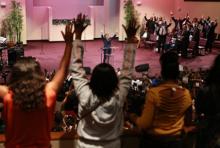
ST. LOUIS — Justice was a recurring theme as thousands of mourners packed the mammoth Friendly Temple Missionary Baptist Church on Monday for the funeral of Michael Brown, a black teen whose fatal shooting following a confrontation with a white police officer set off weeks of sometimes violent protests.
The Rev. Al Sharpton, among the speakers, called for a “fair and impartial investigation” into the shooting.
“We are not anti-police, we respect police,” Sharpton said. “But those police that are wrong need to be dealt with just like those in our community who are wrong need to be dealt with.”
Benjamin Crump, a lawyer representing Brown’s family, alluded to the “three-fifths” clause in the Constitution for counting slaves (which actually was an anti-slavery clause) and demanded that Brown get “full justice, not three-fifths justice.”
Brown’s body was being laid to rest, but the controversy surrounding the Aug. 9 shooting was far from over. Prosecutors have not determined whether the Ferguson police officer, 28-year-old Darren Wilson, will face charges in Brown’s death.

Like many of you, I’ve been overwhelmed and deeply saddened by the events that have transpired in Ferguson, Mo. And at times I’ve felt helpless, 350 miles away in Cincinnati, as friends of mine are in Ferguson praying, marching, organizing, and working for peace and justice.
In my conversations with friends of color, I have witnessed their pain and frustration and deep angst over the events of Ferguson. The past two weeks have hit very close to home for them.
With white friends, the response has been mixed, but the overwhelming sentiment is one I’ve already identified: helplessness. I am not satisfied with this response. I believe there are ways we can respond, bear witness, be in solidarity and work for justice in this moment. Our love for God and neighbor demands we engage. If you are like me, you are praying without ceasing for the Shalom, peace, and justice of God to reign in the hearts and minds and streets of Ferguson and throughout this nation and world. So how can we pair our prayers with constructive action?
Here are ten ways white Christians can respond to Ferguson.
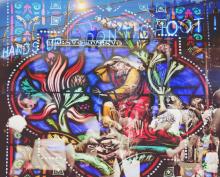
"Then the LORD said, 'I have observed the misery of my people…I have heard their cry…Indeed, I know their sufferings…’ - Exodus 3:7
For the last few weeks, the eyes of America have been riveted on the town of Ferguson, Missouri, a formerly little-known suburb of St. Louis. It was there on Aug. 9 that an unarmed African-American teenager named Mike Brown was shot six times by police, sparking ongoing protests and demonstrations by grief-stricken and outraged citizens. Clashes between demonstrators and heavily armed local police, highway patrol, and the Missouri National Guard have been the subject of extensive coverage and all manner of commentary across broadcast and social media.
These demonstrations in Ferguson represent something more than just lament for the tragic death of Mike Brown. They are an outcry at the demonization of black men, racial profiling, institutional racism, intergenerational poverty, the militarization of law enforcement, and a culture of incarceration in America. Over the last three weeks, Ferguson has become a flash point for urgent issues facing minority communities, issues which have been largely unnoticed or ignored by the majority white culture. The #Ferguson hashtag no longer just refers to the events happening in Ferguson but has come to represent a national conversation about the toll that institutional racism and its many diabolical expressions have taken on our fellow Americans.
In the days following Mike Brown’s death, columnist Leonard Pitts, Jr. described the protests as “an act of outcry, a scream of inchoate rage. That’s what happened this week in Ferguson, Mo. The people screamed.” These screams echo of the cries that God heard from the Hebrews enslaved in ancient Egypt.

As the Rev. Barbara Williams-Skinner collected signatures for a statement by leaders of African-American church groups about the Ferguson, Mo., police shooting of Michael Brown, she found more people wanted to join in.
The general secretary of the National Council of Churches wanted to add his name; an Asian-American evangelical leader, too.
What started out as a “Joint Statement of Heads of Historic African American Church Denominations” has become an interracial cry for justice.
“It’s touching hearts of people who have sons and who know that their sons would not be treated this way,” said Williams-Skinner, co-chair of the National African-American Clergy Network, on Thursday. “They know it’s wrong. They know it’s wrong before God. And they are responding on a human level.”
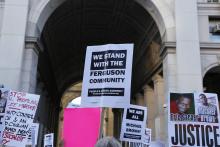
This week, I saw a torrent of debate about who reached for the gun and why police don’t shoot people in the leg rather than taking their lives. Neither angle seems to capture the bigger story at play on the evening news and fueling protest marches across Missouri.
On Sunday I preached to my church on race, current affairs and how to process — in a biblically loving way — what has been happening to brothers and sisters in Ferguson. (See video below) Talking about race and current affairs can be taboo in evangelical churches, and it was interesting as I saw a few couples exit the back door as I spoke.
Last week, I penned my thoughts on why we should pray for the saints in Ferguson. It was the outgrowth of my personal frustration and the pain I feel over the misunderstandings on race that can pervade the majority culture.
Race, Current Affairs & Prayer from Antioch Church on Vimeo.

I’ve been calling it the Summer of Helplessness.
From the conflict in Gaza that has left more than 1,000 civilians dead, to the downing of Malaysia Airlines Flight 17 over the skies of Ukraine, to the Ebola breakout getting worse by the day, to the shooting of yet another unarmed black teenager here in the U.S., the news of late is enough to make a person feel paralyzed with helplessness and despair. My prayers these days are of the tired, desperate sort: How long, O Lord? Will you hide your face from us forever?
But when it comes to violence and oppression, we are rarely as helpless as we think, and this is especially true as the events unfolding in Ferguson force Americans to take a long, hard look at the ongoing, systemic racism that inspired so many citizens to protest in cities across the country this week.
I’ve heard from many of my white friends and readers who say they aren’t sure how to respond to the anger and grief they are watching on TV or hearing from their black friends. They want to be part of the solution but don’t know where start. They may even feel a little defensive when they hear people talking about white privilege or inaction on the part of white Christian leaders. I’m in the process of learning too, but as I’ve listened to people of color whose opinions I trust, I’ve heard them issue several calls to action we can all heed.
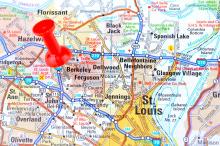
I am white. Most of the people near my house are white. This is the way it is for most of us white people in the U.S., and as we continue to be shown, the consequences are both critical and countless.
While the Fair Housing Act of 1968 prohibits all forms of housing discrimination, the U.S. Department of Housing and Urban Development estimates that millions of instances occur each year, thus residential segregation continues to be a common facet of modern day life. To put it simply, white people tend to live by other white people, and it is the way it is by no accident.
Segregated neighborhoods are often reinforced by the practice of racial “steering” by real estate agents, or when landlords deceive potential tenants about the availability of housing or perhaps require conditions that are not required of white applicants. In addition, lending institutions have been shown to treat mortgage applicants differently when buying homes in non-white neighborhoods in comparison to their attempt to purchase in white neighborhoods. As a result of such practices, white people tend to live in a state of residential separateness, for as the most recent U.S. Census date confirms, genuine racial integration is — for the most part — alarmingly rare.
Of course, our own behaviors contribute to our current state of affairs. White people seem to prefer housing located by other white people. As a result, far too many white people are willing (and able) to pay a premium to live in predominantly white neighborhoods. So equivalent housing in white areas commands a higher rent than others, and through the process of bidding-up the costs of housing, many white neighborhoods effectively shut out people of color, because those without white skin are more often unwilling (or unable) to pay the premium price to buy entry into such white neighborhoods. As a result of such white flight and isolation, not only do we witness a rise in racial ignorance and indifference, but it also leads to increased injustice in the form of disproportionate hostility directed at people of color.

In recent years, my family has navigated some rough patches: death, cancer treatments, open heart surgeries, chronic disease, etc. Now, I’m certain this isn’t everyone’s experience, but mine has been that in these times of trauma or tragedy, family comes together to stand with one another as we wrestle through life’s crap. We aren’t picking fights, we are crying on each other’s shoulders.
In recent months, our human family has been enduring an especially rough patch.
War.
Racism.
Suicide.
Deadly viruses.
Plane crashes.
Whether in remote villages or urban centers, few have been untouched (in some way) by the realities unfolding.
As I observe our corporate response to tragedy as a human family, and evaluate my own response in the midst of it, I have noticed something disturbing unfold. Rather than rally together as a family navigating a season of trauma, we have used this moment to divide, stir hatred and misunderstanding, point fingers, and more than anything, view those on the opposite side of an issue as less than human.

Christians often talk about actively changing the world, but too often, we just sit still and passively watch the struggles of others without participating, leading, or caring. We don’t love.
Why? Because many Christians have an inability to use their imaginations.
People who can’t imagine are susceptible to bigotry, racism, hatred, and violence toward others. Why? Because they can’t imagine any other scenario, perspective, or opinion other than their own. They have an inability to see themselves in someone else’s shoes. They can’t see beyond their own narrow reality.
When you can’t imagine, you can’t empathize, understand, or relate with the actions, struggles, pain, suffering, persecution, and trials of others — you become apathetic, unmoved, stoic, and inactive.
Whether our differences are gender-related, age-related, race-related, culturally related, politically related, economically related, socially related, theologically related, value-related, or related to any countless number of factors, overcoming them requires imagination.
When you can’t imagine, you can’t celebrate, appreciate, admire, and joyfully love others. You disconnect yourself from humanity.
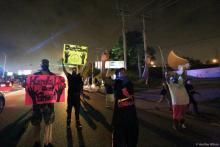
I have so much emotions and thoughts in my mind, heart, and body – in light of the oh-so-much that is going on all around the world – including the utterly tragic, brutal, and unnecessary “death” of Michael Brown.
But I thought it would be helpful to share a few thoughts how churches, Christians, and leaders can be engaging the events of the past 11 days in their respective churches – now and in the future. I’m not suggesting that pastors have to completely alter their sermons or Bible studies, but to altogether ignore the injustice of Michael Brown’s death would be altogether foolish.
To be blunt and I say this respectfully,
The integrity of the church is at stake because when it’s all said and done, it’s not a race issue for me — it’s a Gospel issue. It’s a Kingdom issue. We shouldn’t even let isolated issues in themselves hijack the purpose of the church. The Gospel of Christ is so extraordinary that it begins to inform (and we pray, transform) all aspects of our lives. So, in other words, we talk about race and racism because we believe in the Gospel.
So, here are five suggestions for Christians, leaders, and churches.
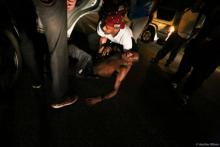
Editor's Note: Rev. Alvin Herring is on the ground in Ferguson, Mo. Following is his account of the events of Aug. 17.
Last night democracy was trampled not as the media would suggest by the angry footfalls of sullen youth determined to disturb the peace and wreak havoc in their own community, but by the heavy march of a police force that seemed determined to create tension and antagonize young people — young people who are carrying the trauma of nights of unrest and lifetimes of dehumanizing racism.
We witnessed with our own eyes beautiful young people peacefully marching in step to cries of “hands up, don’t shoot.” We saw the very young holding older siblings’ hands and the old being pushed in wheelchairs by teenagers who had pain in their eyes but strong voices lifting up their laments to a nation that must find the will to hear them. And though they were clearly agitated, they were courageously hewing to the commitment to act peacefully in the face of an overwhelming police response that seemed determined to escalate an already tense situation.
Law enforcement was outfitted with the machinery of war. The officers wore military fatigues and carried automatic weapons. They were helmeted, with their faces obscured, and in the darkness they looked more like machines than human beings. They perched atop huge military vehicles with glaring lights and screeching sirens. It was otherworldly — and all of this to face down a group of wounded children, wounded tonight and many nights before this night.

Our nation has a problem. It is not a “black” problem or a “white” problem, but a “human” problem that we all succumb to — and have the power to change. Our beloved nation was NOT “conceived in liberty” OR “dedicated to the proposition that all men are created equal,” despite President Lincoln’s well-intentioned words. That was the hope, but it has never been the reality.
Many of my African-American sisters and brothers are furious. Yet another child has been felled. The challenge is this — if a tree falls in the forest and white folks don’t hear it, does it make a noise? Many of us who are white do not have the contextual experience or the “ears to hear” to understand the fear and the fury.
More than a decade ago, I pastored in a community that was predominately African American. It grew from 72 percent to 98 percent black in just seven years as a result of “white flight.” In the course of this time, the police force struggled because it didn’t listen to the people. Most of the officers were white and could legally live up to 30 miles away; as a result many (including the chief) lived in another state.
At one heated meeting, the police chief informed us what we “could” and “could not” do as we discussed community initiatives that included the older white and adolescent black residents in conversation and collaboration. Finally, as the pastor of one of the larger churches in town, I stood up and said, “Chief, please understand that we are not asking for your permission. We are telling you what we, as citizens of this town, are going to do. Now we need to know — are you with us? Or not?” The African-American residents stood and clapped loudly. I felt their pain and the reason for what some perceived as “paranoia,” but what I knew to be legitimate fury.

A soon-to-be college-bound Michael Brown is shot by Missouri police, reportedly while holding his hands above himself in surrender and while unarmed. The resulting protests turn violent, leading ultimately to police setting up barricades, complete with snipers, tear gas, and flash grenades. Local stores are decimated and scores are injured in the resulting tensions.
Not long ago, Eric Garner, another African-American man, died of suffocation while being submitted to a choke submission hold by a New York policeman.
Last year in North Carolina, a black man was shot 10 times by a policeman. And all of this is in the shadow the Trayvon Martin, whose tragic and unnecessary death, is still fresh in our minds and hearts.
As cited on the Economist website , it’s enough to elicit a grim question from Delores Jones-Brown, director of the John Jay College on Race, Crime and Justice. “People are asking,” she says, “Is it open season on us?”
Meanwhile, half a world away in Iraq, ISIS continues to wreak havoc, and the United States has resumed an airstrike campaign after a decade of military force trying to maintain a tentative peace in a fractured nation. Hardly a day goes by when we don’t have reports of more Israeli and Palestinian blood spilled over the historic Gaza conflict, and Russian President Vladimir Putin continues to — in the words of a recent TIME Magazine article — “create problems only he can solve.” All the while, he stokes resentments between east and west not seen since the Cold War, seeking, too, to weaken the cohesive strength of NATO and to drive a wedge between the United States and its allies in Europe.
What’s happening to us?
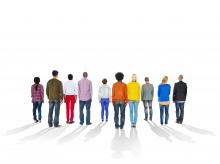
A study came out recently saying that millennials (a category that I apparently fit into) consider ourselves the “post-racial” generation. By and large, young adults think they are the ones who have moved past racism.
Except, that’s not true. Racism is alive and well.
Here at Sojourners I’m privileged to be a part of enlightening conversations about diversity, racism, sexism, and a whole host of other injustices. This makes it all the more frustrating when I try and continue those conversations outside the Sojourners community, and I’m met with resistance. Most of my friends are extremely uncomfortable discussing race. And not just because it’s a taboo subject; this is D.C., after all, and politics are always fair game in friendly discussion. Instead, I’ve found that my friends are so unsettled by the subject that they either try and change it, or they tell me it’s not about race, it’s about income inequality. Those arguments, which I follow up with “where do you think the income inequality came from?,” are still met with resistance, and arguments that if we could just bring people out of poverty, the racial disparities would vanish.
Except they wouldn’t.